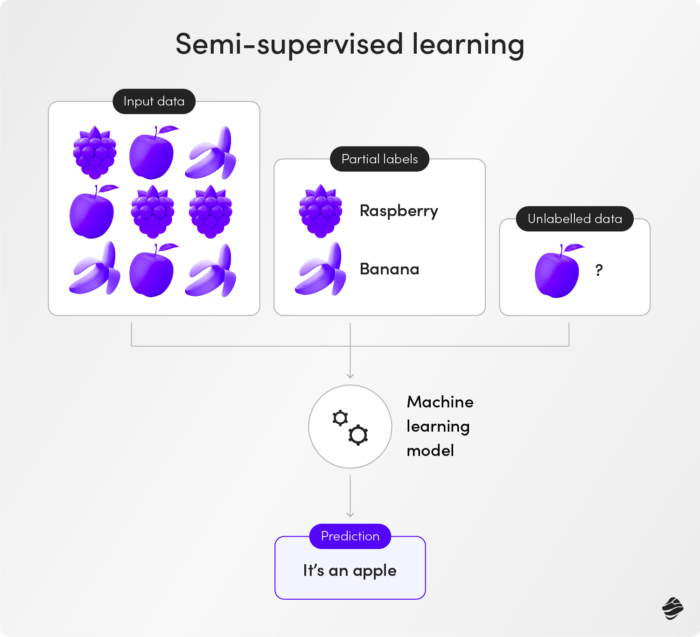- Home
- AI Glossary
- Semi-Supervised Learning Definition


Semi-Supervised Learning Definition
Semi-Supervised Learning Definition
What is Semi-Supervised Learning?
Semi-supervised learning integrates supervised and unsupervised learning methods that enable a system to learn from labeled and unlabeled data. This combination allows for better learning efficiency and model performance, especially when labeled data is scarce or expensive to obtain. Semi-supervised learning is particularly useful when there is a small amount of labeled data and a larger pool of unlabeled data.
Semi-Supervised Learning: Method Explained
The core principle of semi-supervised learning is to use a small amount of labeled data to guide the learning process along with a larger set of unlabeled data. This method improves the model’s accuracy without requiring extensive labeled datasets. The process usually starts with a supervised learning phase, where the model learns from the labeled data. Then, in the semi-supervised phase, the model applies this learning to the unlabeled data, refining its understanding and improving its predictions.

Semi-supervised learning has vast applications in fields like language processing, where labeling large datasets can be impractical. For instance, in sentiment analysis, a model might learn from a small set of product reviews with labeled sentiments. The model can then apply this understanding to a larger corpus of unlabeled reviews.
In summary, semi-supervised learning is a hybrid AI development approach that combines the precision of supervised learning with the flexibility of unsupervised learning. This approach makes it an essential tool in machine learning, especially when dealing with large datasets that are only partially labeled.
Ready to discover more terms?






